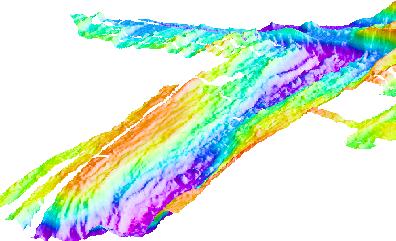
In February 1996, an earthquake swarm was detected by the PMEL T-phase monitoring system on the northern Gorda Ridge. Several event response cruises were dispatched as quickly as possible to investigate this event. Cruises in March and April, 1996, found a large "event plume" of warm water at the site and mapped a new lava flow on the seafloor with several camera tows. This site was also visited for several follow-up studies in summer 1996, including SeaBeam resurveys, high-resolution seafloor imaging with sidescan sonar and ROV dives. This eruption had a larger volume of extruded lava than the 1993 CoAxial eruption (18 vs. 8.7 million cubic meters of lava), but a more rapid decay of hydrothermal venting (~3 months vs. ~3 years), highlighting the variability between eruptions on different ridge segments. A movie of the 1996 lava flow is available on the Video page.
A series of 13 scientific papers was published in a special issue of the journal Deep-Sea Research II (v. 45, n. 12, p. 2503-2766, 1998), including this one on the geology of the 1996 eruption site:
Chadwick, W. W., Jr., Embley, R. W., and Shank, T. M., 1998, The 1996 Gorda Ridge eruption: Geologic mapping, sidescan sonar, and SeaBeam comparison results: Deep-Sea Research II, 45, 2547-2570.
last modified 11/09/01 by Bill Chadwick
